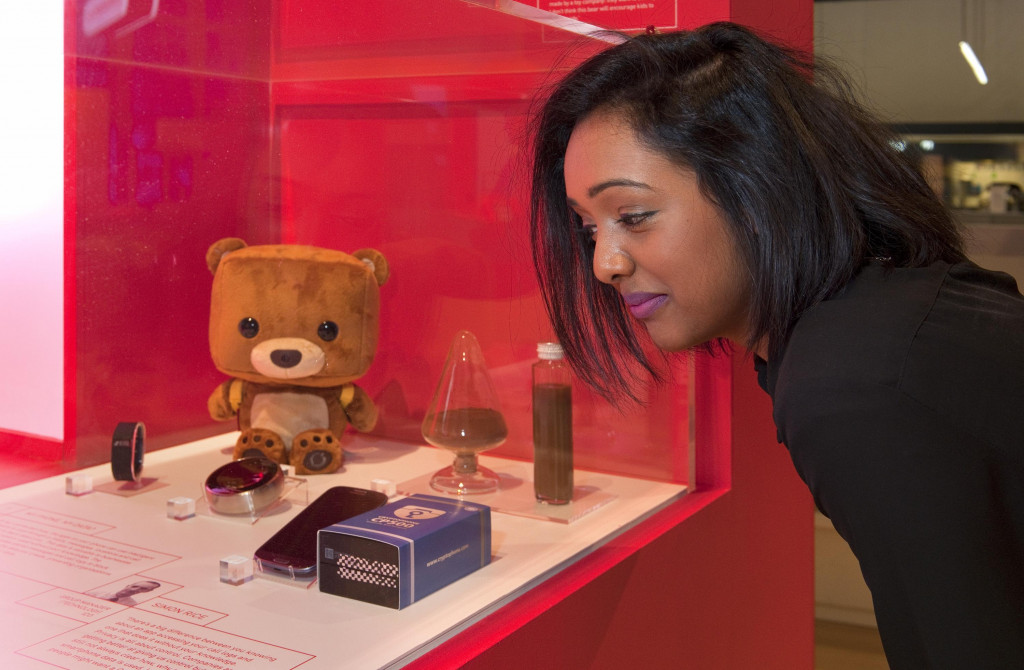As with every exhibition, there are some objects that tell stories that we can’t explore within the short information labels. One particular object on display in Our Lives in Data certainly fits this category.
The vial of rust-coloured powder may not look like much but is a very special substance that can absorb and block magnetic fields. Called Epsilon Iron Oxide, the power has been written about in hundreds of academic research papers and excites people on both sides of data privacy arguments.
Developed by Professor Ohkoshi at the University of Tokyo, Epsilon Iron Oxide is a collection of nanoparticles that are the most powerful iron-based magnets of their size because of their crystalline structure.

Privacy advocates are thrilled at the prospect of using this substance to block WiFi signals. In 2010 Google was found to be recording home WiFi signals that its cars were passing as a part of the Street View project, essentially allowing Google to make a map of WiFi networks. This caught many people off guard and the response led to a fairly large fine and a United States Supreme Court case.
This new technology may also wean people away from using online storage, which is open to searches by the company storing the information. Through its unique magnetic qualities, Epsilon Iron Oxide is being used to develop new forms of data storage on magnetic tape. This is a much more advanced version of VHS tapes, which contained a long string of magnetic indicators on a ribbon which could be understood by the VCR machine.
With this new material, we could see a comeback of similar technology, since nanoparticles would make production more efficient, secure and reliable than leaving data in the Cloud. The capacity to block WiFi signals and store data locally rather than online is seen by many as necessary for privacy in the information age.
Other potential benefits include protecting complex devices from high frequency magnetic waves in facilities like hospitals. Absorbing these signals can limit interference on sensitive equipment. It can also be used to hone and focus other sensors to cut out interference.
By eliminating interference from other pieces of equipment like sensors, monitoring devices can also become more sensitive and used more efficiently. Car manufacturers like Mercedes Benz have taken on this technology already to improve their vehicles’ sensors and warn drivers more effectively of a potential accident. It’s this kind of use that is also supporting the rise of the Internet of Things, where household objects can be connected through networks to work in harmony.
In this day and age, it’s often the smallest of objects that have the biggest impact. Inside this little tube, you can see enormous potential, huge possibilities and some very big questions.
Our Lives in Data explores at how big data and the increasingly connected world is changing our lives. The exhibition runs until September 2017.
Sheldon Paquin is the Content Developer for Our Lives in Data at the Science Museum.